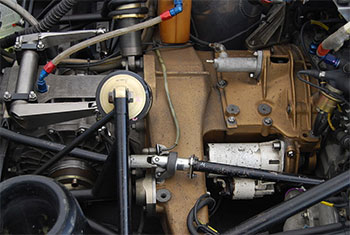Most people only have a slight understanding of how their car works, from a mechanical perspective. That being said, some components of a car do ring a bell to most drivers, such as phrases like “steering wheel,” “accelerator,” “brakes,” and “clutch.” While you likely know to associate the term “clutch” with your car, you may not really know how it works and what it does for your vehicle. Because of the crucial role your clutch plays in your car’s performance and day-to-day reliability, it’s a good idea to familiarize yourself with the clutch and clutch actuator.
What is a Clutch Actuator

Whether you’re driving a vehicle that uses hydraulic, mechanical, or electronic clutch actuation (and regardless of whether your car is driven using manual or automatic transmission), the clutch actuator is crucial to how your car or truck functions. Put even more simply, without a reliable clutch actuator, your car will have serious problems starting and stopping, not to mention changing gears as you move up or down in speed. Here’s an inside look at the clutch actuator to help you further understand exactly why your vehicle’s clutch actuator is pivotal to having a safe and reliable ride each time you’re behind the wheel.
How are clutch actuators designed to work with other components of your transmission?
Clutch actuators are situated within a clutch housing which is in turn connected to your car’s gearbox. This ensures that the clutch actuator can properly shift gears depending on what gear your car needs to be in. An electronic clutch actuator features two main components: an electronic module and a mechanical module. Within the electronic module are various valves, sensors, and other electronic components that tell the clutch what to do when the gearbox “speaks” to it. In the mechanical module, is the operating piston which gets moved when the clutch is engaged or disengaged.
What function does a clutch actuator perform in your car?
The clutch engages and disengages in order to help control your car’s transmission. Whether you’re shifting into park to stop your vehicle or accelerating and changing gears to move at a faster speed, the clutch has a role to play. When it comes to providing drive for your vehicle, the clutch will engage by opening your cylinders to move both the lever and the operating piston. Disengaging the clutch opens inlet valves that allow air to shift the gear in the opposite direction. Most modern cars use electronic clutch actuators; however, some clutch actuators are operated using hydraulics or other mechanical means to open and close the appropriate valves.
Now that you have a better understanding of how the clutch actuator works, you surely see the value in keeping it properly maintained. After all, the last thing you want to have happen to you is to run into problems with your actuator when you’re behind the wheel. Not only can that cause a major inconvenience if you’re counting on your car to get you somewhere important such as work or vacation, but a malfunction of your clutch actuator, while you’re on the road, can also cause a serious or even lethal accident.
If you need help replacing or repairing your clutch actuator, head to a website like https://www.sinspeed.co.uk/category/clutch-actuators/. They offer clutch actuator repair for all makes and models of vehicle, meaning that you don’t need to worry about whether or not you can get an appointment with your dealership or usual mechanic.
Compared to who you usually have to service your vehicle, you might also be impressed with how quickly and efficiently Sinspeed is capable of fixing your car or truck. Best of all, Sinspeed gives you the peace of mind you need after getting your vehicle serviced with their lifetime warranty.













